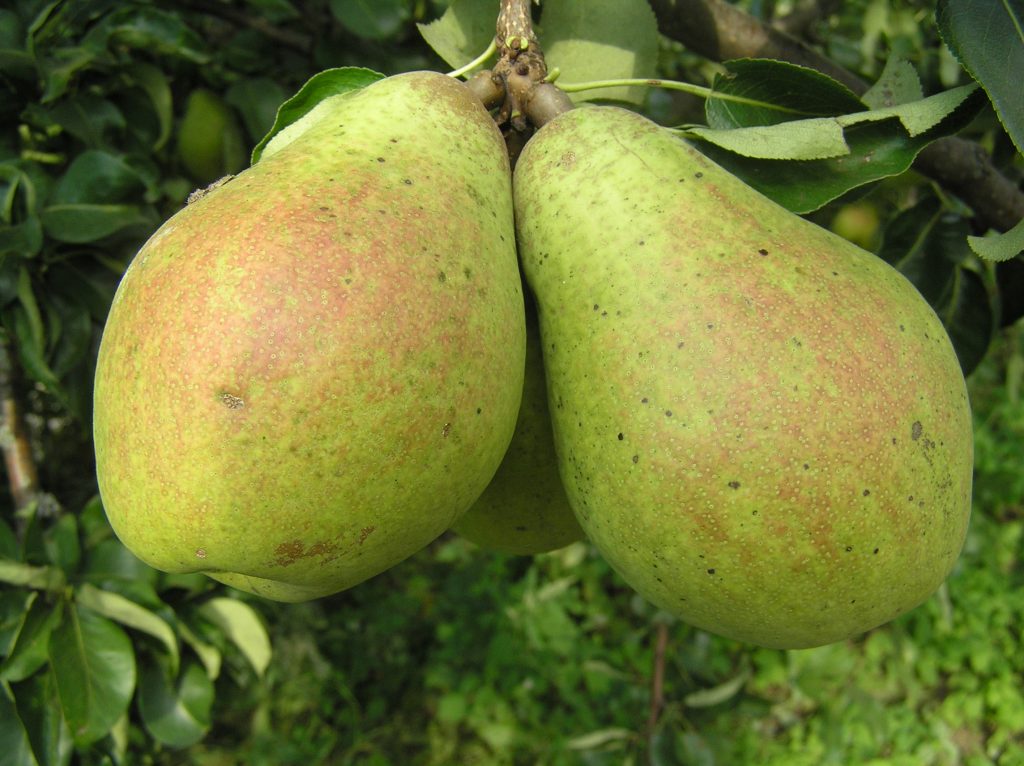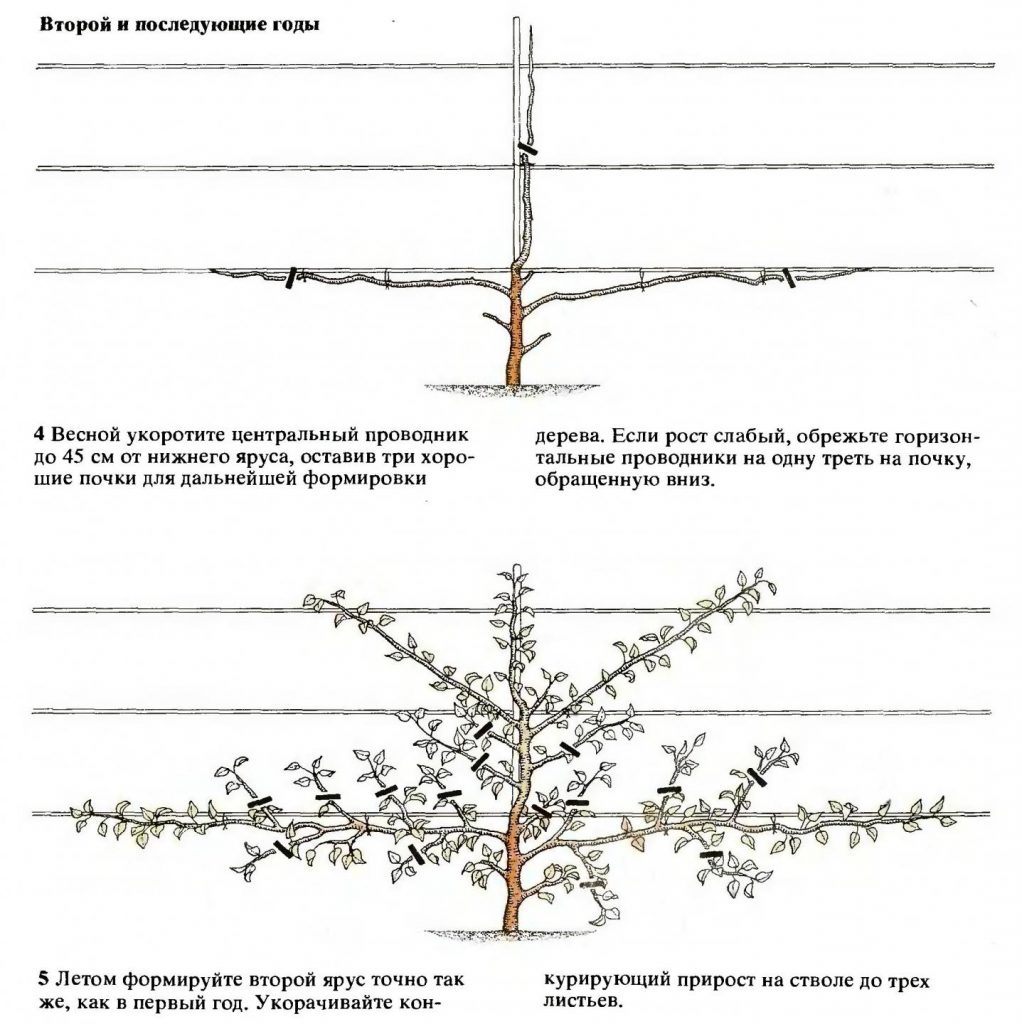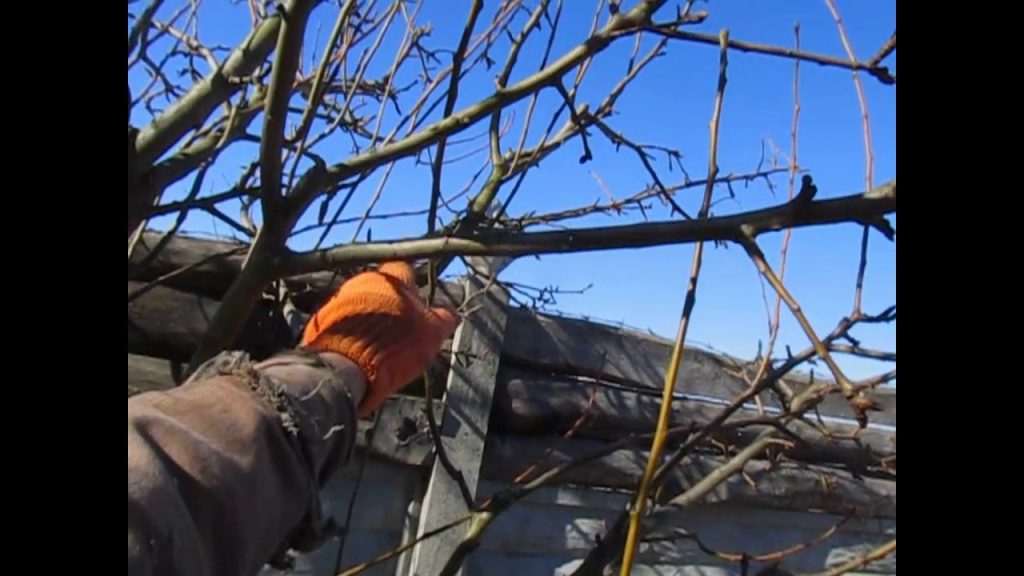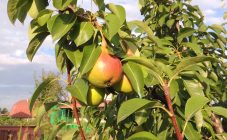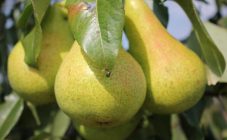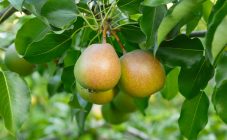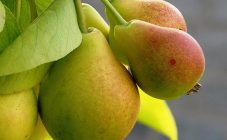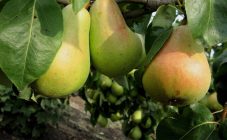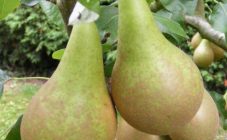Content:
Pears are the favorite fruit of many and are popular for their excellent taste and aroma. Many varieties of this fruit tree have been bred by breeders. Pear Pamyat Zhegalova - one of the brightest representatives of the species, was obtained by crossing the varieties Lesnaya Krasavitsa and Olga. Scientists of the Moscow Agricultural Academy worked on the variety in the second half of the 20th century. Soon the variety was entered into the State Register. Designed for cultivation in the Central region.
Description and characteristics of the variety
This pear variety belongs to the late autumn. Trees are characterized by rapid growth, medium-sized. The young crown of a pear is characterized by a funnel-shaped shape, but as it grows, it acquires an oval-round shape. The pear crown is abundantly leafy, sparse and spreading. Skeletal branches are located vertically at a slight angle relative to the trunk. The bark of the trunk is characterized by a gray color, and the skeletal branches have a light gray tone. Sessile ringlets. Shoots are poorly formed, as for the awakening of the kidneys, the indicators are average.
Shoots of pears are of medium length and thickness, have a brown color, hairless, rounded in cross section. The buds that form in spring are dark brown in color, conical in shape. The pear leaf plates are medium-sized and not pubescent, colored dark green. The leaf thickness is average, the surface is smooth, a curved line is observed along the central vein.
Inflorescences, as a rule, have 5-7 flowers, type - corymbose raceme. Flowers are white, medium size, cup-shaped, and exude a pleasant characteristic aroma. The buds are also formed in white color.
The fruits of the pear are medium in shape, the weight can vary from 120 to 140 g, the shape is obovate or biconical, the surface of the peel is smooth. The skin is slightly oily, medium strength. The color of pears is greenish-yellow, as it ripens from the sunny side, the barrel begins to turn red. There are many subcutaneous points, but they are weakly expressed. Rustiness is tender and weak. The funnel is characterized by narrow shapes. Inside each fruit, medium-sized seeds are formed, in an amount of 10 to 15 pieces.
The pulp is medium-grained in structure, semi-oily, juicy and aromatic. The color of the pulp is white-yellow. The taste of pear is unmatched - the fruit is sour-sweet and slightly tart. The fruits have an attractive appearance, the assessment of taste - 4.3 points out of 5. The advantage of the variety is the versatility of using the harvested crop.
The chemical composition of the fruit:
- dry matter - 17%;
- soluble substances - 14%;
- total sugar concentration - 9.2%;
- acids - no more than 0.5%;
- P-active substances - 212 mg / 100 g.
The time to harvest pears comes in the second - third decade of September. Subject to the rules for storing the harvested crop, the keeping time is maximum 100-120 days.
The Zhegalov pear variety is one of the early-growing ones.Abundant and regular fruiting is observed; on average, up to 40 kg of harvest can be harvested from one adult tree. The crumbling rate of ripe pears is insignificant.
Indicators of winter hardiness of the pear Pamyat Zhegalov is above average. High resistance to scab and other fungal diseases is noted. The variety has good adaptive properties, the culture grows even in unfavorable climatic conditions.
Planting and leaving
The planting site must be selected based on the general requirements for these fruit trees. The site must be well lit and protected from strong wind gusts and drafts. The location of groundwater should be no closer than 1 meter to the surface of the earth. The most suitable types of soils are loam, sandy loam, chernozem, as well as a mixture of them.
When growing a plant in the Middle Lane, it is best to plant in the spring (third decade of April - first decade of May) or in the first half of autumn.
The planting pit must be prepared in advance, dimensions 1 * 0.6 * 0.7 m. Before planting, it is recommended to prepare the soil by introducing humus or compost, sand and superphosphate there. To disinfect the planting material, it is recommended to moisten the seedling with a solution of fluffy lime.
After planting the pear, it is recommended to construct a near-shaft shaft, the diameter of which is 35-40 cm. Abundant watering is required, at least 2-3 buckets will be required, as well as mulching. The best option for mulching is sawdust mixed with dry humus. Before mulching, it is always necessary to loosen the soil, this will improve the air and moisture permeability of the soil.
When planting a pear, a peg must be inserted into the planting hole, which will be a support for a fragile seedling.
Care
For the proper development and growth of a pear, you will need to follow all agrotechnical rules. First of all, the planting material must be well tied to the peg. It is equally important to regularly remove weeds from the trunk circle, where pests may be found.
For pear Zhegalov's memory, soil moisture is of great importance. The lack of water adversely affects the state of the pear tree, it may soon dry out. A young pear must be looked after in the same way as a seedling. As a rule, aphids attack these representatives of fruiting trees. If a pest is found, it should be collected by hand and destroyed immediately.
An adult pear is undemanding to watering, a powerful root system is able to provide itself with moisture. For one growing season, no more than 4 waterings will be required. If there is a sultry heat outside, it is worth watering the pear at weekly intervals and be sure to mulch the tree trunk circle to retain moisture in the soil.
Fertilization
Before growing pears, the gardener will need to familiarize himself with the structural features of its root system and, based on the knowledge gained, provide the culture with nutrients, macro- and microelements. The root system goes deep, so it is impractical to use dry dressings, they simply will not achieve the goal.
If you use exclusively mineral complexes, then the soil will be acidified. Organic matter must be applied no more than 2-3 times a year, which is definitely enough for feeding an adult tree.
Pruning
As a rule, sanitary pruning of the crown of a pear is carried out in the spring before the start of sap flow.
An important condition is that the air temperature must be at least +8 degrees.The tree is still dormant, which makes it easier for it to endure the pruning procedure. But in the summer, this procedure is highly discouraged (exception: pruning dry and diseased branches).
During sanitary pruning, diseased, dry, damaged, old and infertile branches are removed. Pruning is carried out with clean and sharp tools, after the completion of the procedure, the cut points are carefully treated with a solution of garden varnish.
Advantages and disadvantages
Why is the variety of pears Memory Zhegalov so fond of domestic gardeners? The answer is simple - thanks to its advantages, which more than cover the disadvantages. Main advantageous features:
- Early maturity - the first crop can be harvested 3-4 years after planting.
- The Pamyat Zhegalova variety is estimated as fruitful. This is due to the fact that under favorable climatic / running conditions and compliance with the rules of agricultural technology, it is possible to collect approximately 40 kg of fruit from a tree.
- The maximum storage time for fruits is 100-120 days, fruits can be transported over long distances.
- Due to the low shedding of the crop, it is possible to preserve a lot of fruits.
- High indicators of frost resistance, as well as developed adaptive properties to adverse weather conditions.
- Good resistance to fungal diseases, including scab.
Despite the large number of advantages, unfortunately, there are also disadvantages, or rather one - the self-infertility of the pear. To obtain a crop, care must be taken to select and plant a nearby pollinator.
The pear variety Pamyat Zhegalova is not picky and at the same time has a large number of advantages. Thanks to its unpretentious care, even a novice agronomist can grow a healthy and strong tree.
